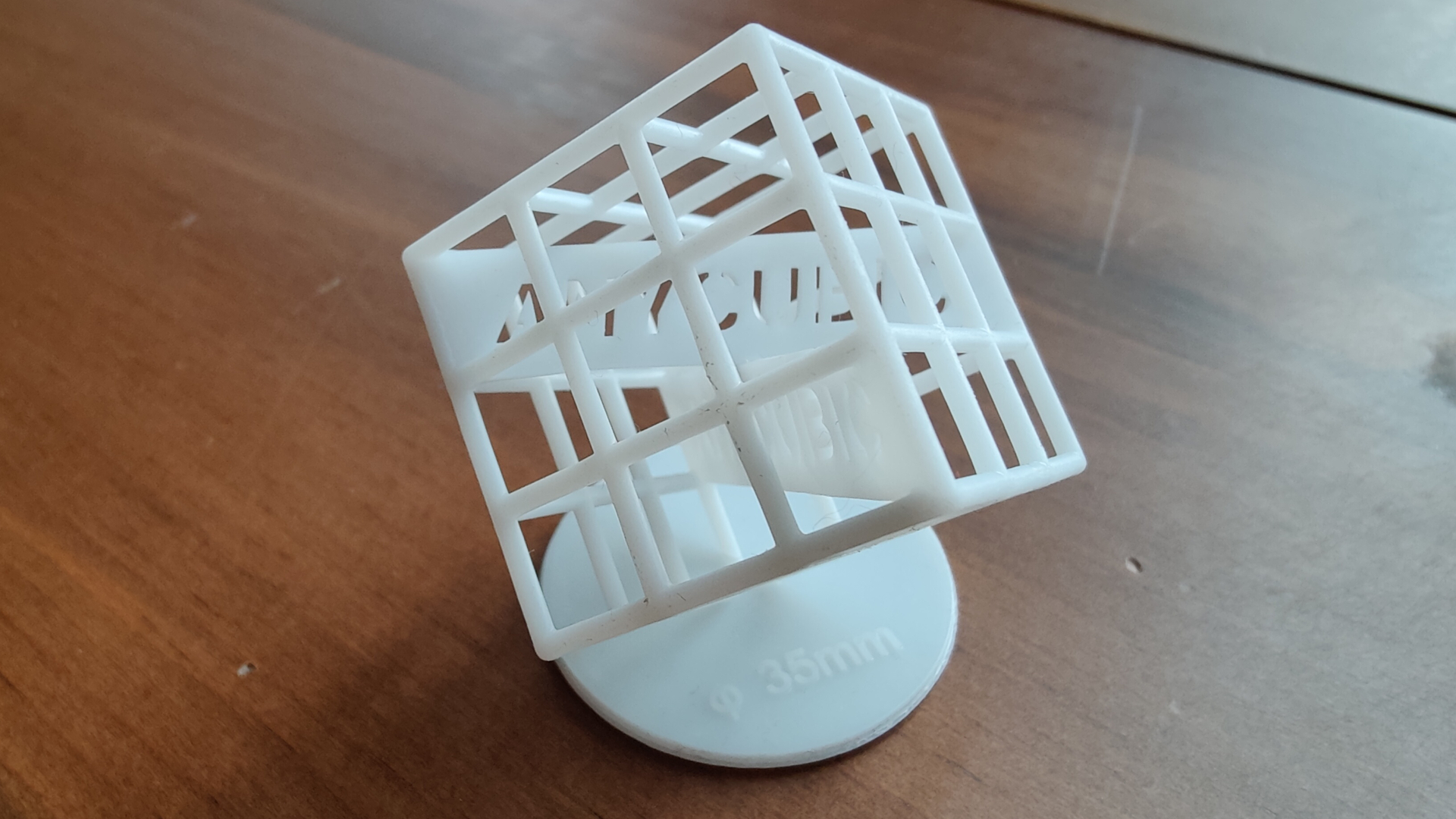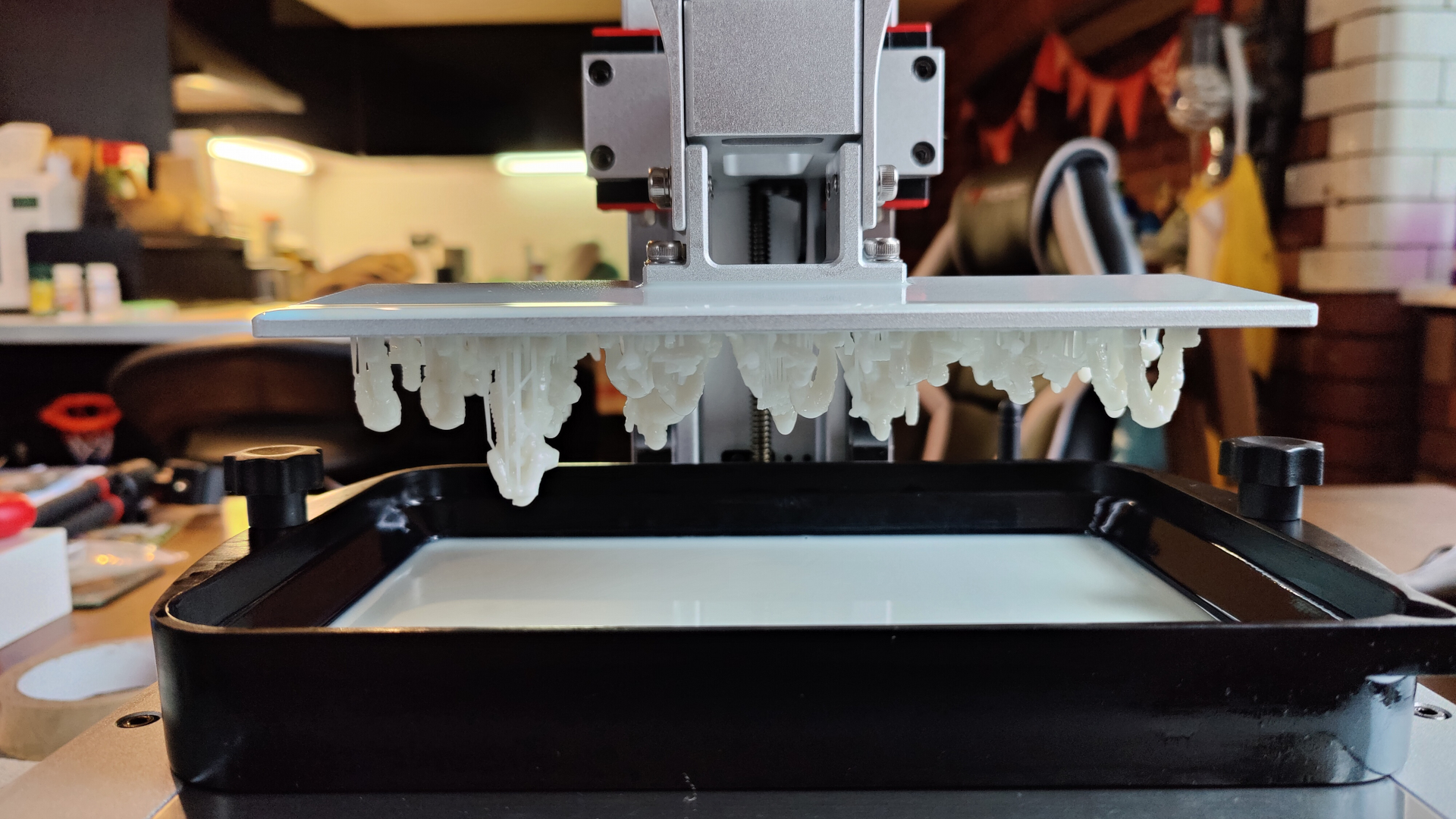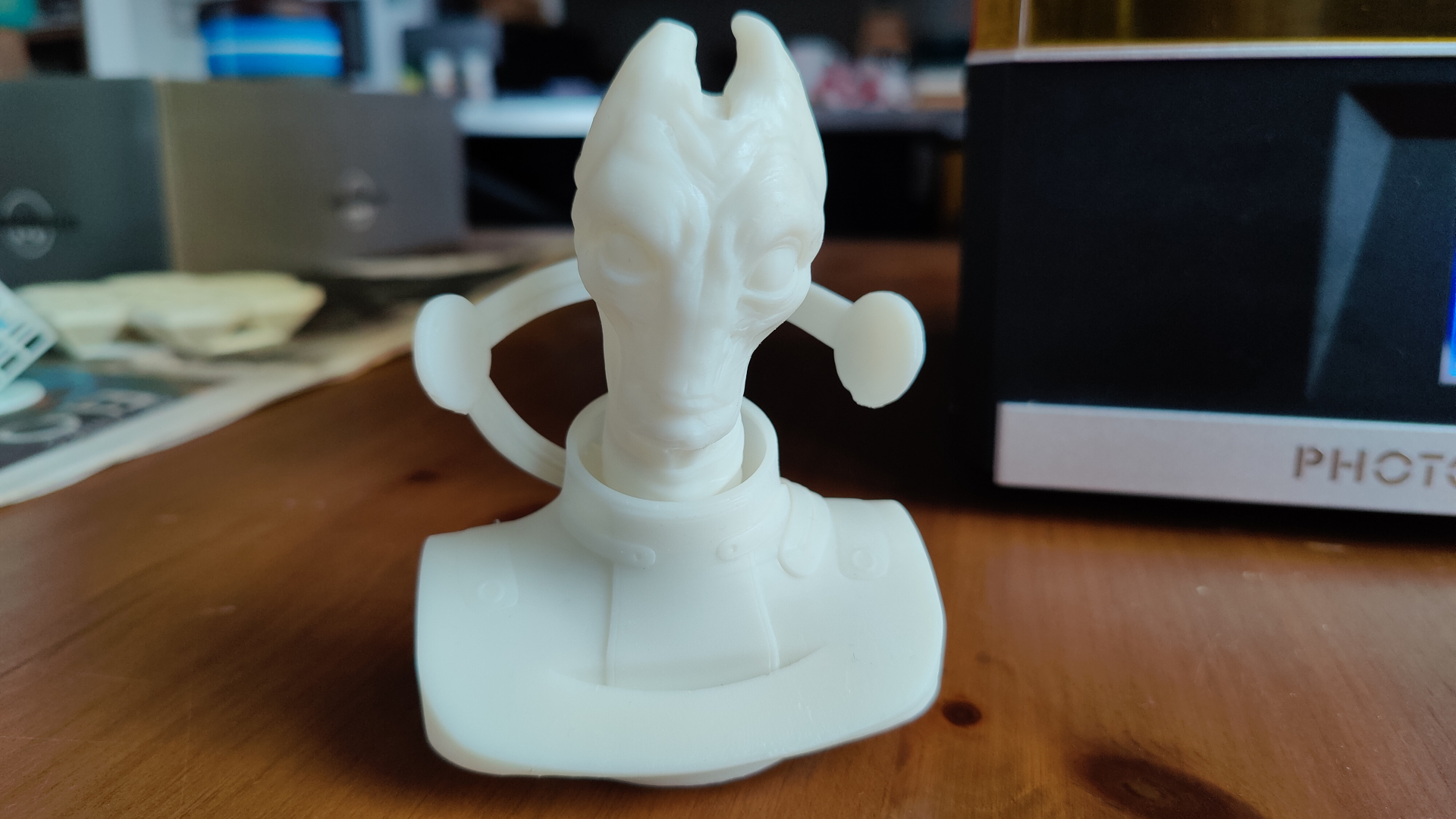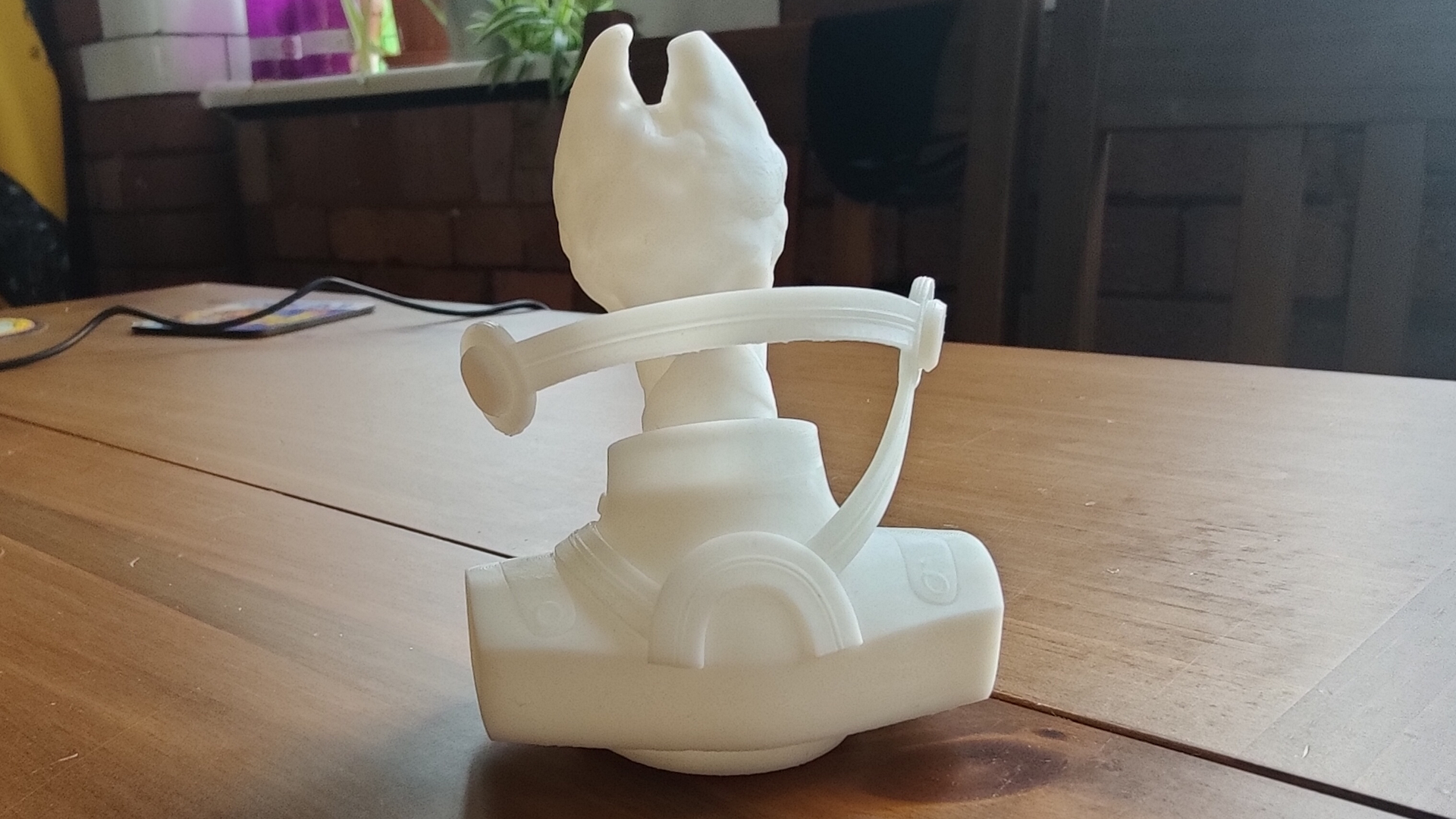Space Verdict
Resin 3D printers offer exceptional detail, but that usually comes at the cost of build plate size. The Anycubic Photon Mono X 6K alleviates that problem by offering a huge build plate, while the 6K screen ensures there is no loss in print quality as we scale up. It’s easy to use, looks great, and kicks out great prints. The only real issue we had is that it runs a little louder than some other printers we’ve tested, but that’s not a deal breaker.
Pros
- +
Fantastic build quality
- +
Easy to use
- +
Large build plate
- +
Good print quality
Cons
- -
Loud
- -
Photon Workshop is prone to crashes
Why you can trust Space.com
We're still a ways off from the replicators from Star Trek, but 3D printers have come on a long way in the last few years and the Anycubic Photon Mono X 6K is a great example of what these devices can do.
Anycubic has been in the 3D printer game since 2015, starting out with FDM printers before branching out into resin printers with the Photon range, and it's impressive just how seamlessly the company has made that transition. Now we're getting another addition to the Photon family with the Anycubic Photon Mono X 6K, but what does this printer offer that previous models didn't?
The Anycubic Photon Mono X 6K is one of the largest printers that Anycubic offers, with an impressive screen area of 38.22 in² ( 9.6 x 7.8 x 4.8 in.). While other printers have offered similar size print beds, the Photon Mono X 6K's real advantage is in the name - it has a 6K screen, That means you're not losing out on print resolution with this scaled up print bed, so it should kick out models at the same quality (or better) than a smaller 4K printer. But does it live up to that promise?
Anycubic Photon Mono X 6K review: Set-up
Like most Anycubic printers that we’ve worked with, the Anycubic Photon Mono X 6K was mostly a breeze to assemble and get set up. There is no major assembly required, you just need to attach the build plate to the main body of the printer. Then you simply plug in the device and switch it on.
We’re assuming you spotted that mostly qualifier a couple of sentences back though. To protect it’s fancy 6K screen, the Anycubic Photon Mono X 6K comes with a screen protector that you have to install yourself and we found it to be an absolute nightmare, to the point where we just didn’t put it on. We made multiple attempts following the instructions, but we just could not get the protector to go on without air bubbles, and the advice to push them out using the plastic scraper didn’t work either.
Once you got the screen protector on (or thrown it in the bin in a fit of rage), the rest of the setup is nice and easy though. The Anycubic Photon Mono X 6K has a 3.5 inch color touchscreen that is used to control the device. We found the touchscreen to be accurate and responsive, and the menus are all laid out sensibly.


From here, you simply follow the instructions to level the build plate and then you can install the resin vat. Everything is explained clearly in the instructions that come with the printer, and there is even a spare sheet of paper to use when levelling. Levelling resin 3D printers is a lot simpler than their FDM counterparts, so the whole process shouldn’t take you longer than a few minutes.
Breaking space news, the latest updates on rocket launches, skywatching events and more!
Once you’ve set everything up, you just need to load a print file onto the included USB drive (or use the included test file). Then you fill the vat with resin, put the UV light cover over the printer and set it going.
If you’re new to 3D printing, be aware that resin is super nasty stuff. You should wear gloves, eye protection, and a face mask at all times when using it. If you do get it on your skin or hands, wash them immediately as it’s quite a nasty skin irritant. It should go without saying, but also don’t swallow it, and store it far out of reach of children and pets.
Anycubic Photon Mono X 6K review: Specs and features
- Large print bed
- 6K resolution
- Photon Workshop software needs work
The Anycubic Photon Mono X 6K’s standout feature is right there in the name - it has a 6K resolution. This is to accommodate for the larger than usual build plate though, so this doesn’t necessarily mean you’re getting better quality prints than a 4K printer. So the real benefit of the Anycubic Photon Mono X 6K is that you can print larger objects without sacrificing print quality.
The print bed is a generous 9.6 x 7.8 x 4.8 in. / 24.5 x 19.7 x 12.2 cm, which is slightly larger than the standard Anycubic Photon Mono X which topped out at 24.5 x 19.2 x 12.0 cm. More importantly though, the upgraded screen means that the Anycubic Photon Mono X 6K has over twice the pixel count on an almost identical sized screen, which, in theory, means better print resolution.

The Anycubic Photon Mono X 6K’s other main party trick is that it prints quickly. The figures that Anycubic gives are around 8 cm/hr. / 3.15 in./hr, and while this does vary largely based on what you’re printing and what print settings you’re using, we did find that the 6K printed quicker than previous models that we've used.
The software that comes with the Anycubic Photon Mono X 6K is Photon Workshop, Anycubic’s proprietary software. It’s relatively easy to use, though we did have a few issues with it repeatedly crashing when trying to hollow out large models. We checked around the Anycubic forums and crashes seem to be a relatively common complaint. Fortunately, you don’t have to use this software, with many Anycubic fans preferring to download Chitubox to use for orientation, hollowing, and support creation, then just slicing the file with Photon Workshop to avoid the issues. It’s a fix, but the fact it’s needed at all is disappointing.
Anycubic Photon Mono X 6K review: Print quality and speed
- Large print bed is great for big models (or loads of small ones)
- Print quality is high
- Prints fast, but not as fast as claimed
To put the Anycubic Photon Mono X 6K through its paces, we ran it through multiple prints of varying types and sizes. We started out with the test file, which was a wireframe cube with the Anycubic logo displayed inside the cube. It’s a very impressive looking piece of architecture that shows you what resin 3D printers can do.
It’s also a good test of the accuracy of the print, as the cube itself is scaled to be exactly 35mm along all its edges. We tested this with a set of digital calipers and found that it was disappointingly off, measuring in at 34mm on all sides. We printed it twice and got the same result, so we think this is actually an issue with the digital model rather than the printer.



Hackster noted in its review that it’s the same test model that came with the original Mono X, but scaled down. All of our other prints came out at the correct size when measured, so this just seems to be an oversight on the supplied test print (which can’t be modified in Photon Workshop as it’s a pre-sliced file).
After that, we decided to test out the larger print bed on the Mono X 6K by filling it up with models. As resin 3D printers are hugely popular amongst wargaming and roleplaying game fans, we ran a test print of 28mm models and pieces from Anvil Industries’ Republic Grenadiers set. We managed to comfortably fit one of every piece from the set on the build plate, and they all printed off wonderfully, with crisp details and no noticeable errors.



Finally, we printed off a single larger model to see how the Mono X 6K handled itself. Mass Effect fans will recognize this print as Mordin Solus, a fan favorite character who has been faithfully recreated by Mini Monster Mayhem.
Here, we’re looking to test Anycubic’s claims that the Mono 6K can print a typical 4.7” model in 1.5 hours. Our Mordin fell far short of that, taking 7 hours to complete. You could maybe hit these claimed speeds with the right model and by tweaking the settings, but out of the box, those are not the results we got. Despite this, the Mono 6K does print faster than previous models we’ve tested, so that’s still a step up.



Overall, we found printing with the Anycubic Photon Mono X 6K to be a dream. It’s easy to use, prints great miniatures, and it even prints a little faster than other LCD resin printers out there, even if it falls short of it’s own speed claims.
Anycubic Photon Mono X 6K review: Price and warranty
- $659
- 12 month warranty (3 months for screen)
The Anycubic Photon Mono X 6K costs $659 if bought directly from AnyCubic. It’s also available on Amazon, and via Anycubic’s official eBay. We expect that stock issues should resolve themselves now that the launch period and Christmas rush have passed.
On the warranty side of things, Anycubic’s standard warranty for 3D printers is a 12-month warranty on all parts, except the LCD screen, which is only covered for 3 months. This is a little disappointing as the screen is the core of the printer. Better make sure you don't mess up putting the screen protector on like we did.
Should you buy the Anycubic Photon Mono X 6K?
If you’re in the market for a resin 3D printer with a large print bed that can kick out high quality prints, the Anycubic Photon Mono X 6K is a great choice. It’s well built and competitively priced against other brands offerings like the Elegoo Saturn (and the upcoming Elegoo Saturn 6K).
If you’ve already got a decent sized 4K printer and you’re considering upgrading though, then you should really only bite if you need that larger print bed, because you’re only looking at a very minor bump in print quality. The included software is fine when it’s not crashing, but you can find other software out there to run the Mono 6K, so that’s more of an annoyance than a reason not to buy. It also runs a bit loud, which is something to consider if your 3D printer set-up is within earshot of your living room or bedroom.

Ian is the Entertainment Editor at Space.com, covering movies, TV series, and games in the space and sci-fi realms. He's a massive sci-fi nerd and has been writing about games and entertainment for over eight years, with articles on sites like Space, LiveScience, GamesRadar, and more. With a degree in biology, a PhD in chemistry, and his previous role at the Institute of Physics Publishing, Ian is taking a world tour through the different scientific disciplines.

